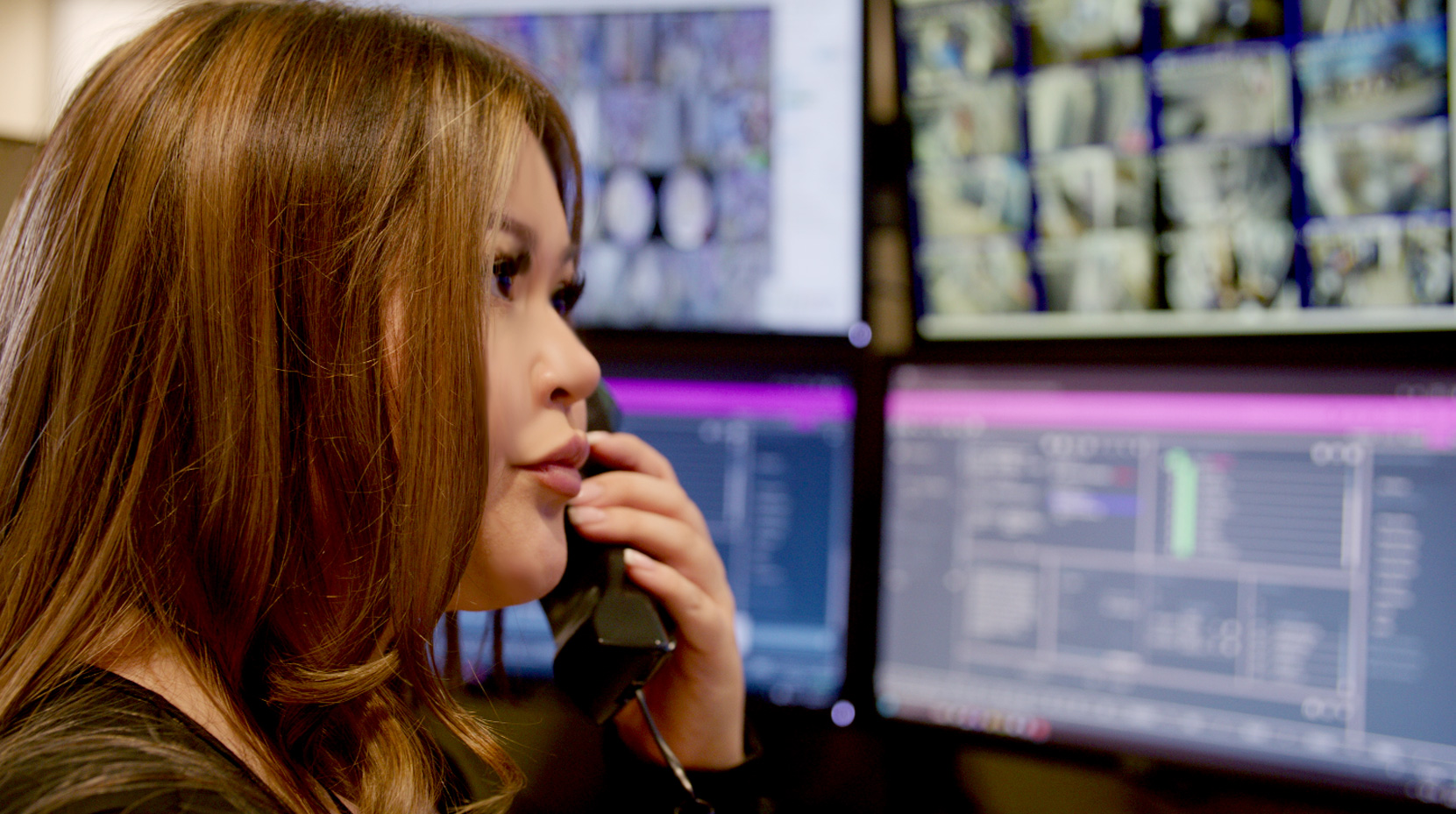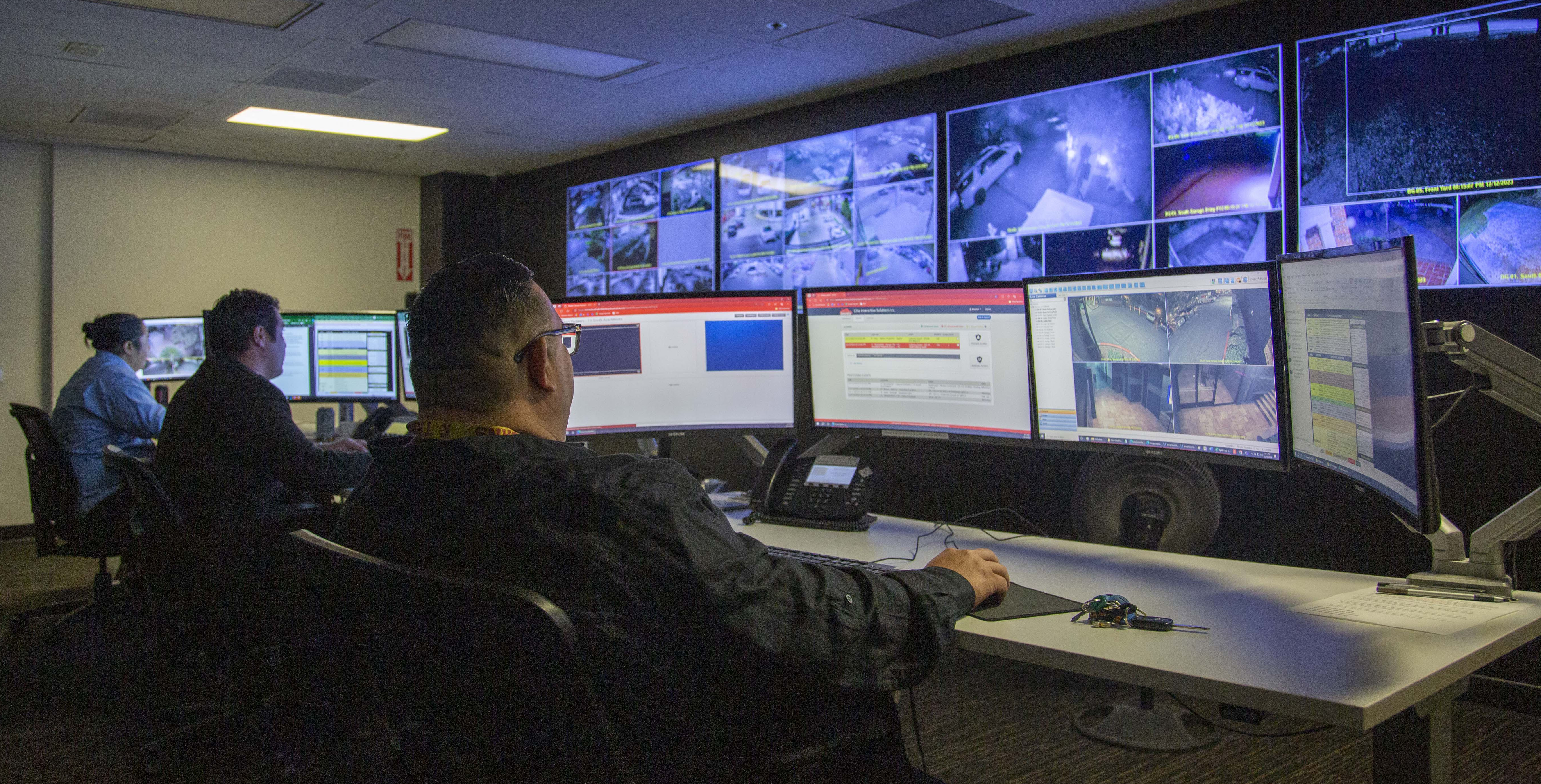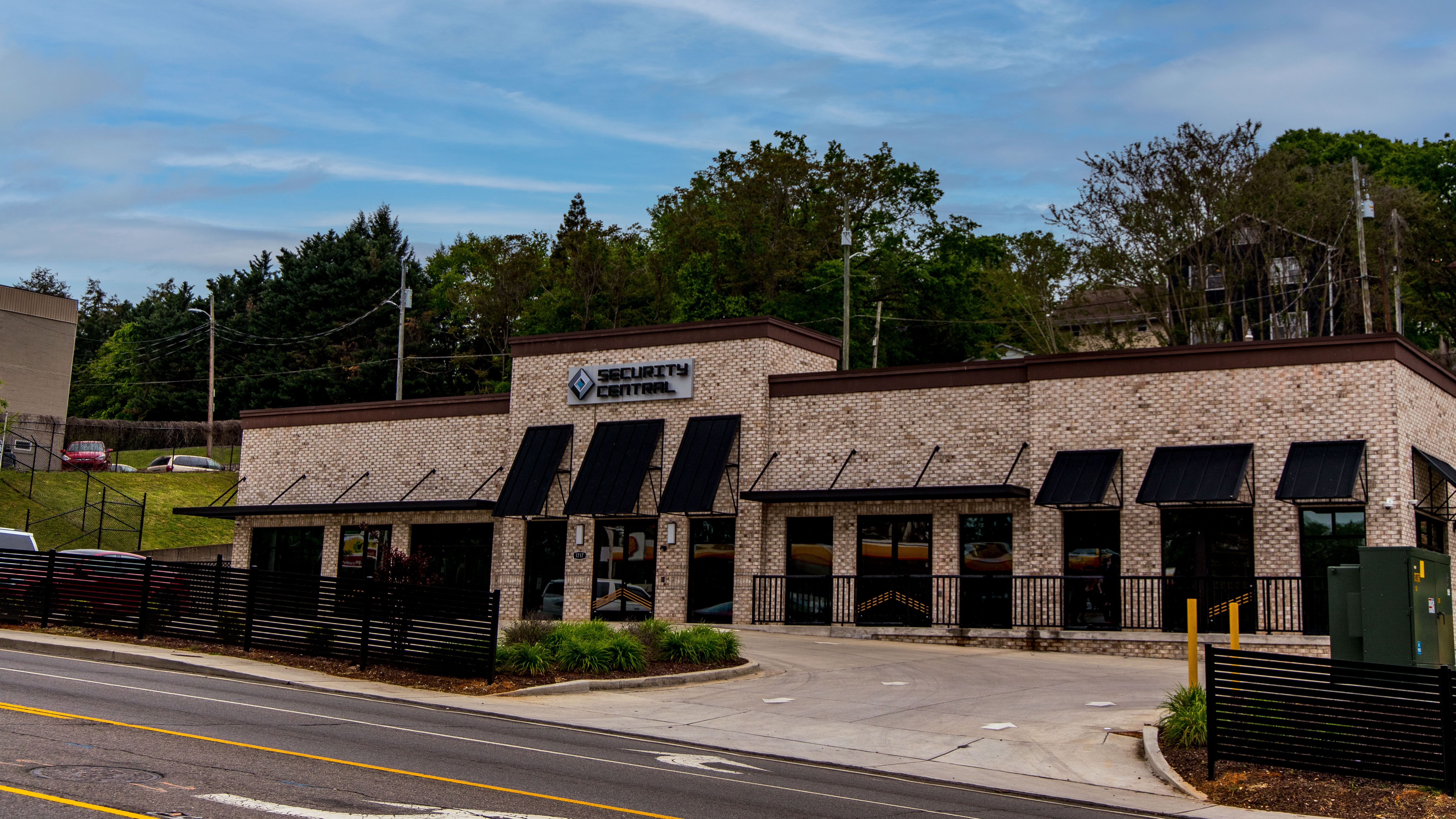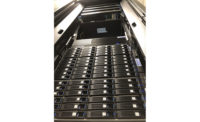The remote video monitoring business has been growing and maturing. It now features more providers, a larger selection of technology solutions, and more ways in which a central station-monitored video system can improve security, compared with earlier generations of the service.
There are several forms of the service. Remote video monitoring can verify an alarm signal generated by an intrusion sensor, such as a motion detector paired with a camera. It also can verify an alarm where the signal is generated by the video camera. In other words, the camera acts as the alarm sensor instead of a motion detector or door contact in the traditional way. In higher-end applications, a monitoring station can virtually guard a premises using a full suite of fixed and pan-tilt-zoom (PTZ) video cameras, AI-based analytics, and a high-quality audio system for talk-downs.
In all of these applications — particularly in virtual guarding — the practices used and the equipment installed by the security integrator at the customer’s premises make a great difference in the outcome of the monitoring response. Everything from camera selection and installation, to the deployment of analytics, to how events are uploaded to the central station all are factors that make a difference, security integrators say.
“The success of the monitoring station lies very much in success of the application in the field. What technology is being placed in the field, how is it being configured and used — all of that relates to the success of the monitoring center,”
— Chris Brown, Immix
Ahead, we tap the expertise of a half dozen industry insiders to explore seven best practices for achieving the most effective and efficient remote video monitoring systems.
No. 1 Site Survey
Remote video monitoring companies usually start with a site survey of the protected premises.
Los Angeles-based Elite Interactive Solutions conducts what it calls “forensic assessments” of its customers’ properties. This involves a team walking the site to look for signs of past breaches and gathering intelligence from the customer about security vulnerabilities of the property.
“For us it’s not about throwing a bunch of cameras everywhere, but understanding where these individuals are breaching — what the past has been — and then designing a system specifically for that. That might be either relocating or re-aiming an existing camera and making sure it’s got the right technology that we need to be able to accomplish that job. For us, less is more, meaning that the more cameras we have might not necessarily provide the end result; it might even create more noise coming into our command center,” says Rudy Aragon, senior vice president of operations at Elite Interactive.
— Rudy Aragon, Elite Interactive Solutions
Caroline Brown also recommends that dealers do a site survey and a site map. The president of Security Central, a wholesale monitoring station headquartered in Statesville, N.C., says it helps integrators consider camera placement in relation to the environment.
For example, installing a camera on the corner of a building might seem ideal for monitoring a business driveway and parking lot, but the placement could inadvertently be capturing highway traffic. By shifting the camera down, integrators can avoid the highway in the field-of-view and get cleaner images, she says.
No. 2 Camera Selection & Programming
A new-camera installation gives integrators the opportunity to select products with field-of-view, lighting and other features in mind. Integrators with experience in remote video monitoring use fixed-lens cameras for some areas, PTZ cameras for others, or a combination.
Updating an existing surveillance system for remote video monitoring could involve moving some cameras around, adding new models, or adding analytics to the system. If the existing system has cameras that are not very intelligent, “the beauty of today’s world is you can layer in a light, inexpensive piece of technology. It suddenly makes those cameras very intelligent and false-alarm resistant, and it makes them able to deliver a large suite of services off the back end of them,” says Brown of Immix.
“Choosing the correct camera for each application is critical. And since the majority of our monitoring happens after hours, we need cameras that have extremely low-lux ratings to be able to see in the dark, including infrared technology or capabilities. In many cases, we might even have to use thermal cameras, as well. It’s based upon the application, based on the forensic analysis that we do,” Aragon says.
Some AI applications can detect people or vehicles at far distances, which end up being only a few pixels in the image. This could result in the operator in the monitoring center not able to determine exactly what they’re looking at, slowing down their whole process, Aragon says. In these cases, Elite Interactive sets a size restriction on detected items, which makes it easier for operators to identify threats.
The company looks for cameras that have wide dynamic range (WDR) for handling variable lighting conditions. And PTZ cameras are necessary so operators can follow a suspect on their customer’s property and zoom in for detailed images.
These are all tools that will not necessarily prevent a crime from happening, but are necessary for Elite Interactive to detect one, Aragon explains. Best practices such as these, when combined, work to reduce central station “noise,” increase efficiency, and speed up the process of responding to events.
“It goes back to our differentiation. We’re not into video verification; we are guarding our customers’ properties. When we receive an event, our agent is now looking at the entire property and handling all of the events specific to that property. They are staying on the line until they do a voice-down. They move that individual off the property or they have to call law enforcement,” he describes.
Elite Interactive says 96 percent of incidents are resolved directly from its Security Operations Command Center, while 4 percent require the assistance of law enforcement. There were more than 73,000 crimes prevented from the command center in 2023, Aragon says.

No. 3 Integration With the Central Station
Interface Security Systems has been doing remote video monitoring since its acquisition of Westec Intelligent Surveillance in 2012. It operates two central stations: in St. Louis, Mo. (company headquarters) and in Plano, Texas, serving about 75,000 locations in the multi-location retail and quick-service restaurant markets. It has a deep offering of services through its interactive Security Operations Center or iSOC.
“We found at Interface … that you must have the ability to integrate to multiple video solutions, and multiple alarm solutions, quite frankly. Just about every retailer or quick-service restaurant we work with has made an investment in an alarm or a video system, so the broader your ability is to integrate with stuff that’s already out there, the better,” says Sean Foley, the company’s chief revenue officer.
Foley believes companies need “a very adroit development team,” such as the one Interface Security has, in order to successfully manage the necessary integrations for remote video monitoring services. The ease of integration between the customer’s on-site equipment and Interface’s iSOC is “mission-critical,” he says.
Foley explains that a big factor in ensuring that video flows easily from the customer’s video management system (VMS) into the iSOC is the type of compression used in the system. “Highly proprietary systems can be challenging sometimes, although all VMS providers have APIs for the most part that we can integrate with,” he says.
This relates to how Interface Security views the difference between video-verified monitoring and what it calls “enhanced remote video monitoring.” The latter provides a more complete picture of the protected premises during an event.
“It’s really important for us to be able to view chunks of video in 16- or 32-camera bits, so when we respond to an event at a customer location, we want our intervention specialist in the iSOC to have all the video at the premises up and ready. We want all the cameras up, so the operator has a holistic view of what’s going on,” Foley describes.
The reliance on the camera system and the VMS to present all of the video at the same time in conjunction with an event is extremely important, he says, adding that some systems can meet that requirement but with others “it’s a much bigger development lift to make that happen,” Foley explains.
“We don’t like to say, ‘I got an activation in zone 1 where there’s one camera so I’m just going to look at that.’ That’s not real-world life safety, because chances are things are moving very fast at the location with lots of different cameras as well,” he says.
No. 4 Checking Speed & Efficiency
Because of the speed at which many events unfold at a customer’s premises, some central stations prioritize detection over resolution so they can view and respond quickly. If the video system offers multiple camera streams, they may calibrate the system so that a lower-resolution video stream is presented to the central station, while the higher resolution stream is recorded for evidence.

“Ultimately for us, detection is critical over resolution. The resolution that is being recorded and going to be used for evidence is always at the highest quality; but that doesn’t necessarily mean that the stream that we’re receiving has to be at the highest quality, because we’re balancing the efficiency and the speed, and being able to control the tools on the site,” explains Aragon at Elite Interactive.
Interface Security also prioritizes efficiency in handling events. “In terms of providing the life safety service we provide, the most important thing is a rapid reaction. So we’re actually willing to sacrifice a little bit of resolution in our monitoring operation if that means we’re getting the video in faster,” Foley says.
Tyson Johns, Interface Security’s senior vice president of security monitoring operations, recommends that companies offering remote video monitoring establish minimum requirements for camera settings. It may never be one size fits all. However, those minimum standards ultimately should specify the bandwidth to be able to meet each customer’s needs in video streaming.
“When we put any of our customers online, we have an online checklist. Part of that checklist is to visually inspect the video to make sure it’s exactly what we expect to see — that it’s clearly refreshing video very fast, meeting our standards,” Johns says. If it’s not, they consider if any settings need to be changed or if something such as bandwidth needs to be addressed.
Customers needs to be accountable for their end, he says. Although Interface Security offer network services, customers that provide their own network are responsible for whatever requirements are established for remote video monitoring.
No. 5 Audio Talk-Downs
A key part of remote video monitoring are audio talk-downs once a threat is detected. Integrators each may conduct talk-downs using slightly different processes.
SDM’s 2023 Dealer of the Year, Peak Alarm, offers two types of video services: video verification (triggered by an intrusion alarm) and live remote video monitoring (triggered by a video camera) using separate teams in its Salt Lake City central station. The company also operates a guard and patrol division that can respond to alarms if dispatched.
Talk-downs are part of Peak Alarm’s live remote video monitoring service only. They are enacted in a couple of ways, says Clint Beecroft, chief operating officer.
As a first step in deterring situations, Peak Alarm uses cameras with a built-in speaker that announces a pre-recorded message to leave the premises, along with flashing red and blue lights. Beecroft says this occurs before an alert is even sent to the central station. Customers have the option of having those initial alerts sent to their mobile phone or tablet.
If the initial deterrent does not produce the desired effect, then the alert is escalated. Central station operators will conduct a live talk-down that could be customized to include identifying information about the person posing the threat, such as color of clothing, in order to get their attention. Dispatching a live guard or law enforcement is a last resort.
“Those site survey plans make you think a little deeper about the surroundings, so that way you make sure that customer has the best experience versus having a lot of unwanted traffic come up after you’ve done the install,” she says.
— Caroline Brown, Security Central
While Peak Alarm uses the audio features of the camera for talk-downs, other security integrators instead put in separate audio components.
Johns at Interface Security says, “We are not currently leveraging [audio] direct off the camera. We are using dedicated amps, mics and speakers for our solution.”
These dedicated components provide the appropriate volume level and projection capability needed for the large areas Interface Security’s systems cover. Johns says in the past they used analog audio technology, but as analog lines became too expensive they switched to digital audio.
One of Interface Security’s best practices is to create a “tight linkage” in proximity between a video zone with great field-of-view and an audio zone. This enables the talk-down to occur exactly where the threat is, rather than in an adjacent area that could prove difficult to hear.
“A great camera and associating those cameras cleanly with the audio zone that those cameras represent is really important, because we don’t want to have a situation at a drive-through where maybe a vagrant is harassing customers and Tyson’s team needs to address that individual and get them to leave, but conducts a voice-down into the dining room. It’s got to happen where it matters,” Foley says.
No. 6 Analytics & AI
It is well known that remote video monitoring generates an excessive number of alerts, especially in the days when alarms were based on video motion detection technology. They are called unwanted or nuisance alarms, and if not controlled, a remote video monitoring business is unlikely to succeed.
But with better technologies such as video analytics — especially analytics based on artificial intelligence (AI) — nuisance alarms can be virtually defeated. Central stations gain efficiency and accuracy in their threat detection processing.
Peak Alarm put a great deal of thought into choosing vendors with “great analytics” in order not to flood its central station with nuisance alarms and anything other than detection of people and vehicles — or in some cases animals, such as installations that detect predators on a ranch, Beecroft says.
To do “the heavy lifting” of filtering nuisance alarms, they use a video appliance on the customer’s network. Beecroft says it works well for existing systems. When installed on the network, the appliance discovers the pre-installed cameras; it scrubs unwanted alarms, identifying only people or vehicles and sending those detections upstream to Peak Alarm’s central station.
In general, AI-based event filtering can be done by the camera (on the edge), by devices such as a server or network appliance (on premises) or in the cloud (off-site). Often a combination of technologies and methods are used, called layering, in an effort to immobilize unwanted alarms.
“We found that doing it on-site is the most efficient and cost-effective. With cloud-based you’re having to use your internet connection to send all that video upstream for the server in the cloud to process,” Beecroft says. “Whereas the little box or server on-site handles that and then only sends stuff upstream that it is already identified as what you’re looking for, whether a person, vehicle or animal.”
Elite Interactive takes a slightly different approach, which includes both edge-based and cloud-based AI. Edge devices process video locally, and in real time they identify and transmit events up to the company’s cloud-based, machine-learning AI.
“We’re able to, at that point, leverage the advanced machine-learning algorithms to continuously improve the threat detection assessment on our customer’s properties. We go through a 30-day calibration where we’re teaching the AI what is human, what is not, what’s a vehicle, what is not — and it quickly learns this,” Aragon says.
In addition, the company routinely pulls data from its software to furnish details such as which sites are over-alarming or which sites are not alarming. “Then we have a team that will go in there and calibrate the systems further,” he says.
Aragon cautions that if remote video monitoring companies don’t stay on top of it, they will start losing control of the noise in the central station from false alarms. “If you're answering thousands or millions of false alarms, by the time you get to the real event it will be too late. By that point, the crime has already occurred. You’re just calling law enforcement to report the event, and you weren’t able to prevent the crime from happening,” he says. Reducing false alarm noise allows you to focus on real events as they happen — the primary advantage of remote video monitoring.
NMC, which operates two monitoring centers in Lake Forest, Calif., and Irving, Texas, offers Netwatch AI-driven video monitoring services. Netwatch Proactive Video Monitoring is backed by advanced AI technology to prevent criminal activity proactively and secure high-value assets, describes Woodie Andrawos, NMC’s president.
“The central station market is evolving with the growing acceptance of AI and cloud-based solutions. We are encouraging our dealers to embrace the trend toward digitization because it delivers cost-effectiveness, enhanced security, and the potential for generating more recurring monthly revenue. By adopting technologies like business intelligence tools and AI-powered video monitoring, dealers can expand their market presence and stay ahead in the evolving security landscape,” Andrawos says.
The evolution of video analytics and AI is set to transform the security industry fundamentally, comments Wes Usie, president, Guardian Alarm Systems, Shreveport, La. Notably, he says, these technologies can provide more accurate detection, reduce false alarms, and offer advanced predictive analytics that can preemptively identify potential threats.
“Central monitoring stations will play a crucial role in this transformation, enhancing their support for life safety initiatives and meeting the evolving expectations of consumers,” Usie adds. “Embracing these advancements will be key for companies looking to thrive in this rapidly changing landscape.”
No. 7 Legacy Systems
Brown at Security Central has a quick suggestion that security integrators can implement with remote video monitoring customers who resist updating their legacy equipment at the premises.

“Even if the camera is a little bit dated, depending on the brand and the manufacturer, there is probably a video solution through some type of bridge integration, that that camera can connect to and still transmit some form of video for that customer,” Brown says.
Option B is for integrators to add one new camera — Brown says there are some budget-friendly cameras featuring crisp images and large field of view — and then make a plan for the customer to purchase additional cameras over the next two years.
Emerging Growth Potential
Brown says Security Central’s video segment is “month-over-month continuing to be the biggest growing segment that we have, which is amazing.” She thinks dealers who are not currently using video need to get engaged with the opportunity, because it is a way for them to go back to their existing customers to generate additional RMR.
“We are aggressively growing 30 percent, year-over-year, for the past five years,” Aragon at Elite Interactive says. He believes their customers are starting to understand that traditional guard services “aren’t very effective. Criminals today aren’t afraid of law enforcement; they’re certainly not going to be afraid of a security guard. Security guards there to observe and report, not to engage. With Elite, now instead of having one guard that’s in one position — even if he’s the best guard — now we will have 15, 20 digital guards guarding your entire property.”
Peak Alarm believes the growth potential is huge, especially for updating existing customers. “Moving forward I’ve got salesmen now going out and bidding traditional intrusion systems, not using any traditional detection devices at all. They’re using video and alarm system,” Beecroft says. “So I do believe it’s the future.”










